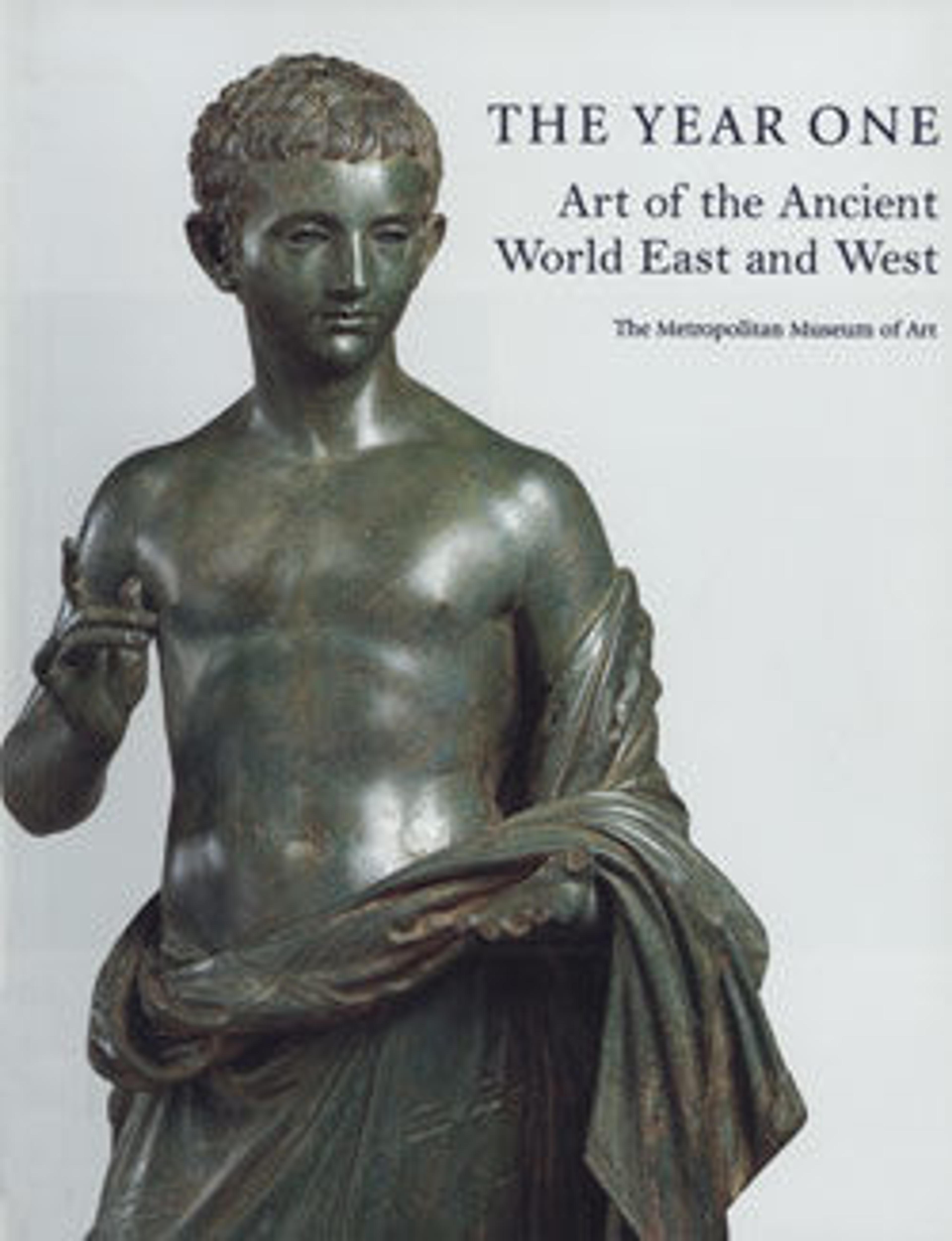Glass beaker
Colorless with green tinge.
Unworked, knocked-off rim with slight bulge below; cylindrical body with vertical sides; concave undercurve and projecting rounded base ring; flat bottom. Three vertical mold seams run down sides from bulge to top of undercurve, with a separate cup-shaped base section.
On body, two fine wheel-abraded horizontal lines on plain band at top of body; eight elongated vertical panels round sides with decoration in high relief: four downward-facing dolphins with shells in their mouth, alternating with four set of objects - a crescent, a four-lobed rosette, a shell, and a six-lobed rosette - arranged vertically; on undercurve, two rows of indented bosses, offset from each other (eighteen bosses in each row); on bottom, a single indented circle surrounding a central hollow with raised dot.
Intact, except for slight chipping and cracking around rim; many bubbles; slight dulling, faint irisdescence, and patches of brownish weathering.
The unique decoration on this beaker is probably meant to recall the circus games, for the Circus Maximus in Rome had lap-counters in the shape of a row of dolphins that allowed spectators to follow the course of a chariot race.
Unworked, knocked-off rim with slight bulge below; cylindrical body with vertical sides; concave undercurve and projecting rounded base ring; flat bottom. Three vertical mold seams run down sides from bulge to top of undercurve, with a separate cup-shaped base section.
On body, two fine wheel-abraded horizontal lines on plain band at top of body; eight elongated vertical panels round sides with decoration in high relief: four downward-facing dolphins with shells in their mouth, alternating with four set of objects - a crescent, a four-lobed rosette, a shell, and a six-lobed rosette - arranged vertically; on undercurve, two rows of indented bosses, offset from each other (eighteen bosses in each row); on bottom, a single indented circle surrounding a central hollow with raised dot.
Intact, except for slight chipping and cracking around rim; many bubbles; slight dulling, faint irisdescence, and patches of brownish weathering.
The unique decoration on this beaker is probably meant to recall the circus games, for the Circus Maximus in Rome had lap-counters in the shape of a row of dolphins that allowed spectators to follow the course of a chariot race.
Artwork Details
- Title:Glass beaker
- Period:Early Imperial, Flavian
- Date:2nd half of 1st century CE
- Culture:Roman
- Medium:Glass; blown in a four-part mold and cut
- Dimensions:H. 4 13/16 in. (12.2 cm)
- Classification:Glass
- Credit Line:Gift of J. Pierpont Morgan, 1917
- Object Number:17.194.232
- Curatorial Department: Greek and Roman Art
More Artwork
Research Resources
The Met provides unparalleled resources for research and welcomes an international community of students and scholars. The Met's Open Access API is where creators and researchers can connect to the The Met collection. Open Access data and public domain images are available for unrestricted commercial and noncommercial use without permission or fee.
To request images under copyright and other restrictions, please use this Image Request form.
Feedback
We continue to research and examine historical and cultural context for objects in The Met collection. If you have comments or questions about this object record, please contact us using the form below. The Museum looks forward to receiving your comments.
